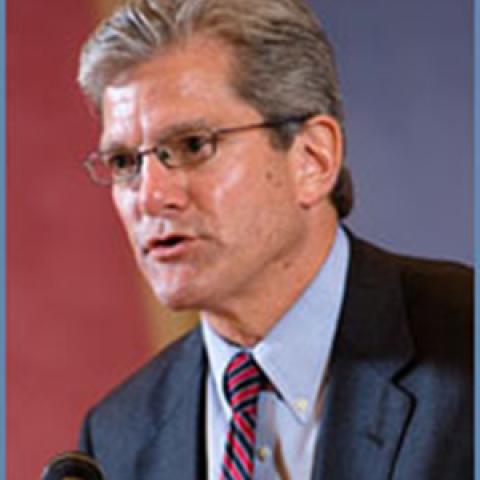Last week, Bob Woodson of the Center for Neighborhood Enterprise took a group of conservatives to visit one of the grassroots groups he works with in Anacostia, a particularly tough part of DC just a few miles from here. House of Help/City of Hope, as the group is called, had been founded in 1995 by Pastor Shirley Holloway, who graciously hosted us, and brought together some of her residents to speak about the changes in their lives that the group had brought about.
The men and women in her ministry told tragic and sometimes shocking stories of lives torn apart by crack cocaine and heroin, family violence and sexual abuse, bankruptcy, divorce, and homelessness. Many of their faces bore the unmistakable mark of years spent living on hard and unforgiving streets.
This seems a long way indeed from the cheerful, brightly lit corridors of the American Enterprise Institute just across the Anacostia River in downtown Washington. Walking down those corridors in the early 1980s, I would occasionally glimpse prominent sociologist Robert Nisbet in his office, sitting ramrod straight at his desk, wearing a tasteful grey herringbone, diligently typing out the flawless first draft of his next book.
His face was a Hollywood vision of the dashing, tweedy academic. And indeed he was the consummate gentleman, perfectly coiffed, elegantly mannered, unfailingly courteous, always quick to send me a formal note card with some kind words whenever I feebly ventured into the disciplinary world over which he towered.
This was the world of mediating structures, or intermediate associations as he preferred to call them. In the late 70s and 80s, under the leadership of Bill Baroody Sr. and Jr., AEI put this concept on the policy map, bringing together Nisbet, Richard John Neuhaus and Peter Berger, Michael Novak and Bob Woodson, to describe a new approach to solving public problems.
Americans, they argued, had never relied exclusively on big government or on big markets to meet their needs. Rather they had always called upon a vast range of civic associations located between the individual and the state families, neighborhoods, religious and ethnic groups, and voluntary associations. The seeds of this argument can be traced to the 60-year-old volume we're discussing today, Nisbet's Quest for Community.
It might seem that my visit to Pastor, now Bishop, Shirley Holloway's ministry has nothing to do with Robert Nisbet. And yet it has everything to do with him, and more broadly with the future of community in America. For her ministry conclusively ties up the loose ends were left with at the end of Quest for Community.
Nisbet himself insisted in the conclusion that we not give in to despair about the fate of intermediate associations or local community. Yet it's almost impossible not to conclude that they are doomed.
After all, capitalism's isolating, atomizing individualism relentlessly erodes community from below.
Since the quest for community will not be denied, however, Nisbet predicts that these pulverized and alienated human atoms will only throw themselves into the arms of the all-encompassing State, which promises to satisfy that quest through the warm embrace of the great, national community.
The State then proceeds to absorb function and authority from the intermediate association, thus completing its demise. This vicious cycle, which Nisbet describes in exhaustive historical and philosophical detail, is hardly a new or ephemeral trend, but has in fact been the singular direction of political thought and development since the Middle Ages.
Small wonder, then, that Nisbet's account has led so many of us conservatives to lose faith in the intermediate association. Oh, to be sure, like Nisbet himself, we don our tweedy herringbones and revel in the glories of its past, in its guilds and cathedrals and Downton Abbeys. We assiduously quote Tocqueville and Burke on its indispensable contribution to the free society. And we include its demise prominently in our indictment of the centralized state. But while we're very clear about how and why traditional community is disappearing, we're not so clear about how, or even if, it can be revived.
Our despair becomes particularly clear, and particularly offensive, when we describe the consequences of civic erosion for low-income Americans. We conservatives seem to delight nowadays in lurid depictions of life among the poor, detailing the devastating consequences of the erosion of marriage, family, and neighborhood, which apparently consigns them forever to be takers than makers.
But if all we have to offer are fulsome accounts of civic devastation among the poor, with no clear doctrine for civic revival, no wonder we find it so hard to shake our image as mean-spirited neglectors of the poor.
This is where Bishop Shirley's House of Help/City of Hope comes in. For it is precisely a Nisbetian civic association that has brought its neighborhood back to life. In three sites around the DC area, she provides up to five years of addiction treatment, job training, marriage and financial counseling, housing and education. But these services are knit together by and grounded in a fervent religious conviction that no matter how badly residents have torn up their lives, they can be repaired through the healing power of this Godly community. Thousands of souls have been rescued by its work.
The primary factor that frees the program's residents from the grip of addiction and other dysfunction is full immersion within the life of a small, immediate, intense, face-to-face community, of the sort that would have been entirely familiar to Tocqueville.
Only by being under the omnipresent and compelling influence of like-minded others, devoted wholeheartedly to the goal of lifting up their lives from ruin, can Pastor Shirley's congregants become the makers they wish to be, rather than the takers they are accused of being.
Nisbet noted that people do not come together in community just to be together; they come together to do something of importance to their lives. For Pastor Shirley's residents, community in fact is the all-important difference between life and death itself.
It should be noted that her residents turned to local community only after they had fully experienced the offerings of the national community. Almost all of her residents have been through government programs of all sorts multiple times, without result. No PhD conservative economist could be more eloquent or better informed than they about the shortcomings and inefficiencies of government programs. For they only provided sporadic services and occasional interventions, not the encompassing, long-term, intense mutual engagement that life-changing recovery demands.
Now, it must be said that Nisbet was himself a bit uncomfortable with religious enthusiasm of the sort to be found in House of Help/City of Hope. He seemed much more at ease around orderly, hierarchical and well-furbished ecclesiastical establishments of the sort to be found in the Middle Ages. The same can be said today about many conservatives.
Yet that of course overlooks Christianity's own gritty origins as a religion of the poor, downtrodden and outcast, its adherents apparently sprouting tongues of fire from their heads, wandering the streets babbling in foreign tongues. And it overlooks the great awakenings that tamed our frontier by filling its forests with boisterous camp meetings featuring, as one historian noted, falling to the ground, jerking, barking and dancing. Many of today's most sober and staid charitable establishments have such sweaty, smoky camp meetings in their not-too-distant past.
As Bob Woodson has argued and demonstrated, all across America, in the most remote and hard-pressed communities, there are thousands of neighborhood groups like Bishop Shirley's, successfully tackling problems that have baffled the most knowledgeable experts dispatched by liberalism's national community.
Nisbet's intermediate associations are springing to life once again in the flintiest and most unforgiving soil, not because they're decorative ornaments of a free society, but because they are the last remaining hope for a better life among individuals facing the abyss.
If we conservatives value civil society as much as we profess, it is incumbent upon us to stop indulging in funeral dirges about medieval guilds and cathedrals, and begin to seek out contemporary exemplars of communities alive and thriving.
DCs conservative intellectuals should hoist themselves out of their comfortable chairs in downtown think tanks, make the trip across the Anacostia, and sit at the feet of Bishop Shirley, studying and writing about her ability to revive community in a neighborhood that had been written off as hopeless by the experts.
Our young people should flock to her side with offers of volunteer help, in exchange for her mentorship in community organization. Conservatives need community organizers, too.
Our wealthy donors should devote fewer dollars to ill-tempered political ads, and more dollars to supporting her ministry and others like it.
Our politicians should learn from Bishop Shirley first-hand why government programs fail and why community-centered efforts succeed, and then they should make this the center of their political agenda, not some patronizing and insulting divide between makers and takers.
Were we to do this, we conservatives would finally have something concrete and constructive to say about low-income communities and how they might be revived.
When we look at Nisbet's Quest for Community through the eyes of Bishop Shirley Holloway, we begin to see just how critical that volume is for the future not only of community, but of conservatism as well.
Her ministry ties up the loose ends he left us about the future of community in America. And a conservatism that embraces her ministry and others like it need not fear the demographic changes that allegedly threaten the extinction of our cause.
The programs of liberalism's national community have done little to alleviate the sufferings of the poor, because they cannot induce the fundamental spiritual transformation necessary to save lives a transformation possible only through immersion in immediate, intense community. This is the conservative understanding of community bequeathed us by Robert Nisbet. It is the understanding that lives today, and is visible for all who wish to see it, in Bishop Shirley's House of Help/City of Hope.
__Ed. note: This essay is taken from the panel discussion Still Questing after All These Years," given at CPAC March 15, 2013, and sponsored by the__ "Intercollegiate Studies Institute

















